Worst Snowstorms in New England History
From nor’easters to Alberta clippers, New England is used to getting plenty of wintery weather visitors. Its worst snowstorms, though, are ones for the record books.
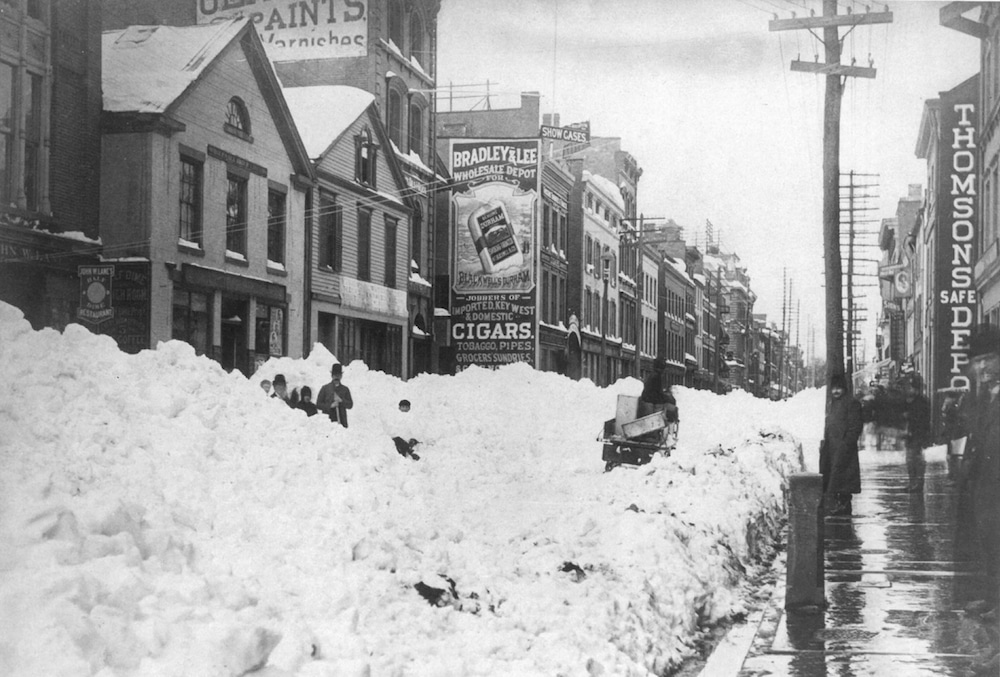
New Haven, CT, after the Blizzard of 1888 | Worst Snowstorms in New England
Photo Credit : Yankee archives/New Haven Colony Historical SocietySnow in New England can yield the romance of a Currier & Ives print, wrapping our centuries-old homes and historical town centers in a soft mantle of white. But when winter weather really ratchets up New England — sitting as it does next door to the Atlantic Ocean, which often fuels the worst snowstorms — those Christmas card scenes give way to Snowmageddon. Snowpocalypse. Snowzilla.
Though any Minnesotan or Alaskan would argue that New England doesn’t have a monopoly on snow woes, the Northeast is so densely populated it can magnify many times over the effect of the worst snowstorms. In fact, U.S. meteorologists’ efforts to measure the intensity of winter storms — as we do with earthquakes and hurricanes — began in 2006 with the Northeast Snowfall Impact Scale (NESIS). The Northeast, stretching from Virginia to New England, was chosen specifically because it has so many people living in the path of any given storm.
That said, it still can be tricky to put the worst snowstorms in New England history into perspective. Timing, temperature, wind speeds, storm surge — they all have a role to play in determining which winter storms packed the biggest punch. But maybe one of the best indicators is the “lived through it” pride flaunted by hardy New Englanders: Look around when you drive in Massachusetts, for instance, and you just might spy an old “I Survived the Blizzard of ’78” bumper sticker.
Worst Snowstorms in New England History
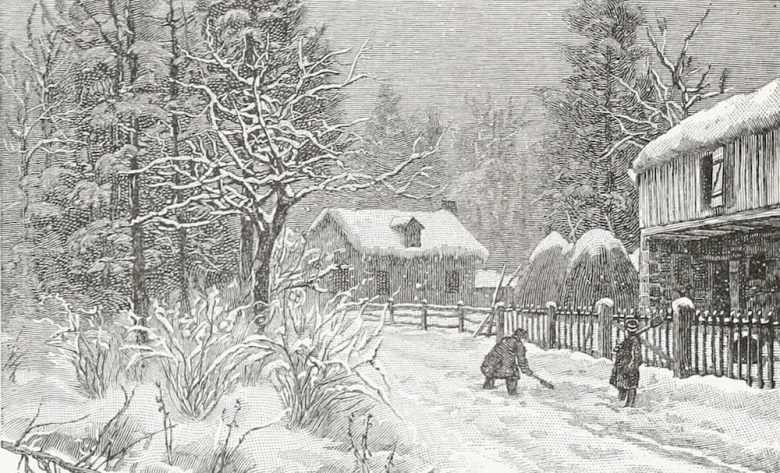
Photo Credit : Via Internet Archive Book Images
“The Great Snow” (1717)
Though official records are scant and there’s no clear death toll, this pre-Revolutionary War storm was undoubtedly a monster. It was actually a series of storms over roughly nine days in February and March that dumped five-plus feet of snow on the New York and New England colonies. In writing about the storm for The New Yorker, Harvard historian Jill Lepore notes that it caused 16-foot drifts in Connecticut, buried 1,100 sheep on Long Island, and forced some New Hampshire homeowners to exit via second-story windows (it also inspired some Bostonians to get around on stilts). The lack of modern snow-removal methods meant that much of the roads in the Northeast were left impassable for nearly two weeks. In the meantime, locals dug tunnels that allowed them to at least get from house to house, or to the town square.
Blizzard of 1888
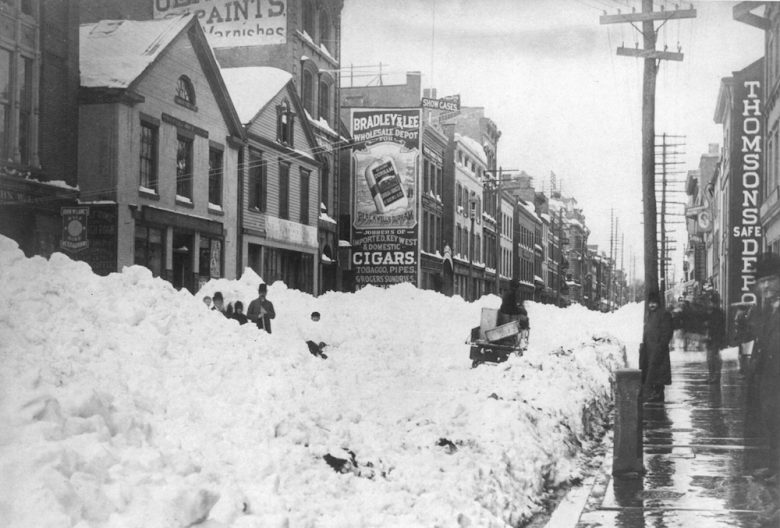
Photo Credit : Yankee archives/New Haven Colony Historical Society
The granddaddy of New England’s worst snowstorms was a nor’easter that punished the whole of the seaboard from New England to the Chesapeake Bay for two days in March. The toll it took is staggering: More than 400 people died, including more than 100 at sea (with winds reaching 85 mph, some 200 ships were lost in the storm). Connecticut and Massachusetts got the brunt of the snowfall, with around 50 inches, while New York City, with its crowded tenements, saw the highest number of deaths, at about 200 (among those who survived: Mark Twain, who was visiting the city and spent several days stranded at his hotel). However, the blizzard did teach city planners some vital lessons, such as the need to bury utility lines and the advantages of subways over elevated trains.
SEE MORE:Remembering the Blizzard of 1888 | Yankee Classic
Blizzard of ’78
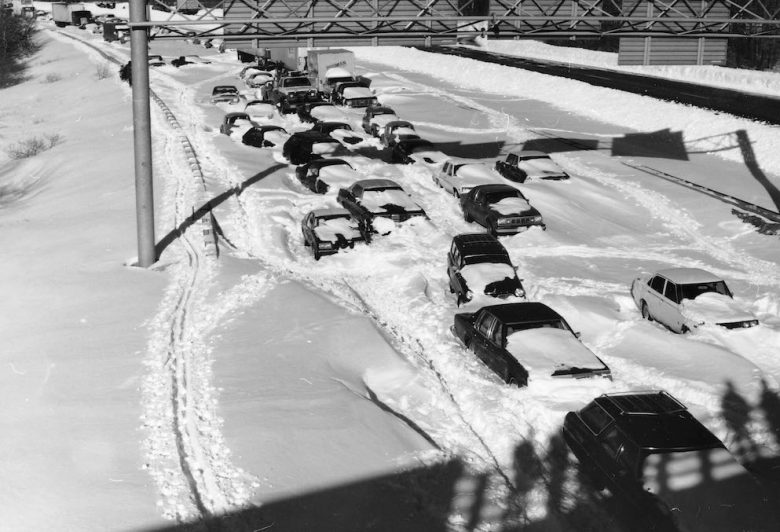
Photo Credit : Jim McDevitt/U.S. Army Corps of Engineers
Though other storms were bigger or caused more damage, the Blizzard of ’78 may loom largest in New Englanders’ collective memory of the worst snowstorms to hit our region. The timing (February 6-7) could not have been worse on all counts. It came on the heels of a January blizzard that had already dropped as much as 21 inches of snow. It developed during a new moon, resulting in unusually large high tides that would wreak havoc on coastal communities. Finally, its snowfall began piling up in earnest in the afternoon, stranding many people between work or school and home (the photos of 3,500 cars and trucks stuck on Route 128 outside Boston that day are unforgettable). Add to that winds that gusted to nearly 100 mph and a load of snow that topped 40 inches in the hardest-hit areas, and the blizzard’s path to infamy was set. Some 54 New Englanders died in the storm, which also destroyed historical landmarks including the Outermost House on Cape Cod and Motif #1 in Rockport (the latter has since been rebuilt).
SEE MORE: The Blizzard of ’78 | New England by the Numbers
“Storm of the Century” (1993)

Photo Credit : NOAAVisualizations via YouTube
The Blizzard of ’78 was often called the “Storm of the Century” until this March superstorm came along. Its ferocity was record-breaking: Affecting more than two dozen states and much of eastern Canada, it ranks as the costliest U.S. winter storm ($9 billion) and the highest-impact modern-day snowstorm in the Northeast (according to NESIS). Popular Mechanics’s John Galvin described the storm as “three days of crippling snow, whirling seas, coastal flooding, blizzards, tornadoes, and bone-chilling cold” and called the amount of snow and rain that it dropped — 44 million acre-feet — “almost biblical.” It knocked out power to some 10 million people and shut down every major airport on the East Coast (a first). But while New England did have to dig out from 15 inches to two feet of snow and suffer through widespread power outages, it got off lightly compared to the South and Mid-Atlantic, where most of the 300-plus fatalities occurred.
April Fool’s Day Storm (1997)

Photo Credit : Paul-W via Flickr
The city of Boston had already taken the plows off its street-clearing equipment by the time this surprise storm hit, burying southern New England in more than two feet of snow between March 31 and April 1. At its most intense, the storm — one of the biggest late-season snowstorms the region had ever seen — was dropping three inches of wet, heavy snow an hour. Winds kicked up to near hurricane force, and among the casualties was the venerable USS Constitution, which lost part of its foremast. Commuter trolleys in Boston were briefly closed for the first time in nearly two decades, and at Harvard’s Arnold Arboretum, more than 100 trees were so damaged by the storm that they were subsequently removed. There were three deaths in Massachusetts and Rhode Island as a result of the storm, all heart attacks suffered by people shoveling the wet, heavy snow.
Presidents’ Day Storm (2003)
This powerful, slow-moving nor’easter struck the East Coast from Washington, DC, to Boston from February 14 to 19, blanketing the cities and towns in its path with 15 to 30 inches of snow. Though its impact on New England pales in comparison to, say that of the Blizzard of ’78, the storm did set the all-time record (since modern record-keeping began in 1892) for the highest snowfall measured in Boston, as well as the most snowfall in the city in a 24-hour period: 27.5 inches.
Winter Storm Nemo (2013)
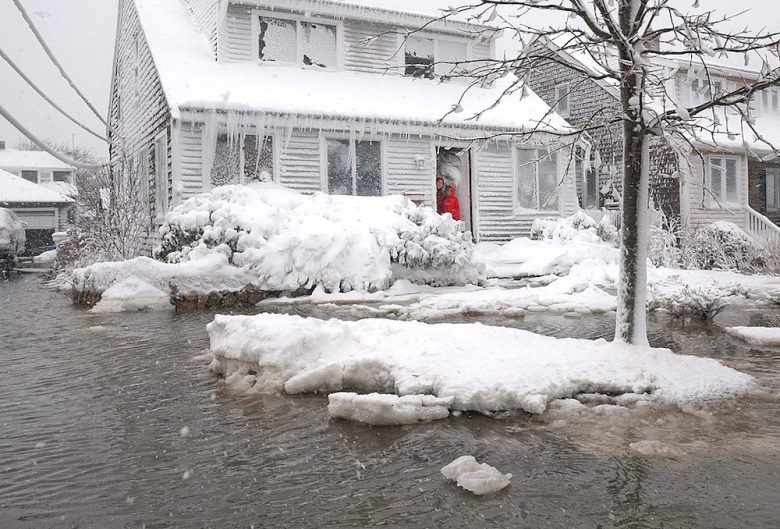
Photo Credit : Sgt. Evan V. Lane/U.S. Army
Two storms over the Northeast converged to trigger this February 8–9 storm that pummeled southern New England and Maine and dumped some of the greatest snowfall accumulations on the region since the Blizzard of 1888. Connecticut was particularly hard-hit: At the blizzard’s height, snow was falling at four to five inches an hour. (Hamden, just north of New Haven, got a total of 40 inches, the most of any city in the storm’s path.) In Massachusetts, Governor Deval Patrick issued a statewide travel ban for the first time since the Blizzard of ’78; similar bans were also issued in Rhode Island and Connecticut. More than a dozen deaths in the Northeast and Canada were blamed on the storm.
Winter Storm Juno (2015)
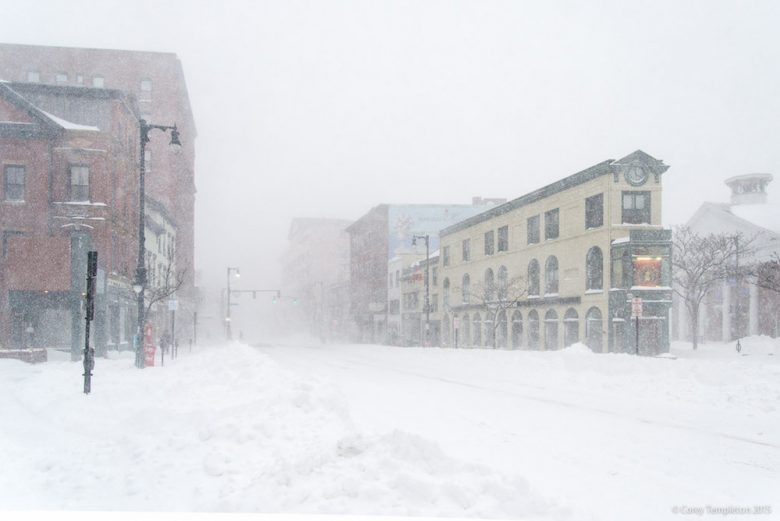
Photo Credit : Corey Templeton Photography | Portland Daily Photo
Originally forecast to strike at New York City, this snowstorm instead brought blizzard conditions to parts of New York and much of New England on January 26 and 27. The Bay State was hit hardest, especially Nantucket, which saw hurricane-force winds and severe flooding and lost power for most of a day — the local police chief told The Boston Globe it was the worst storm he had seen in his 10 years on the island. Inland, Worcester saw a record-breaking 34.5 inches of snow, making Juno the city’s largest snowstorm on record. (The towns of Auburn, Hudson, Lunenburg, and Westford had even more digging out to do, with all reporting 36 inches of snow.) Elsewhere, the tall ship Providence, a 110-foot replica of the vessel used by John Paul Jones in the late 1700s, was knocked off its dry-dock berth in Newport, Rhode Island, tearing a hole in the hull and damaging the mast and eight spars.
Have you lived through one of New England’s worst snowstorms? Tell us about it!
This post was first published in 2018 and has been updated.


